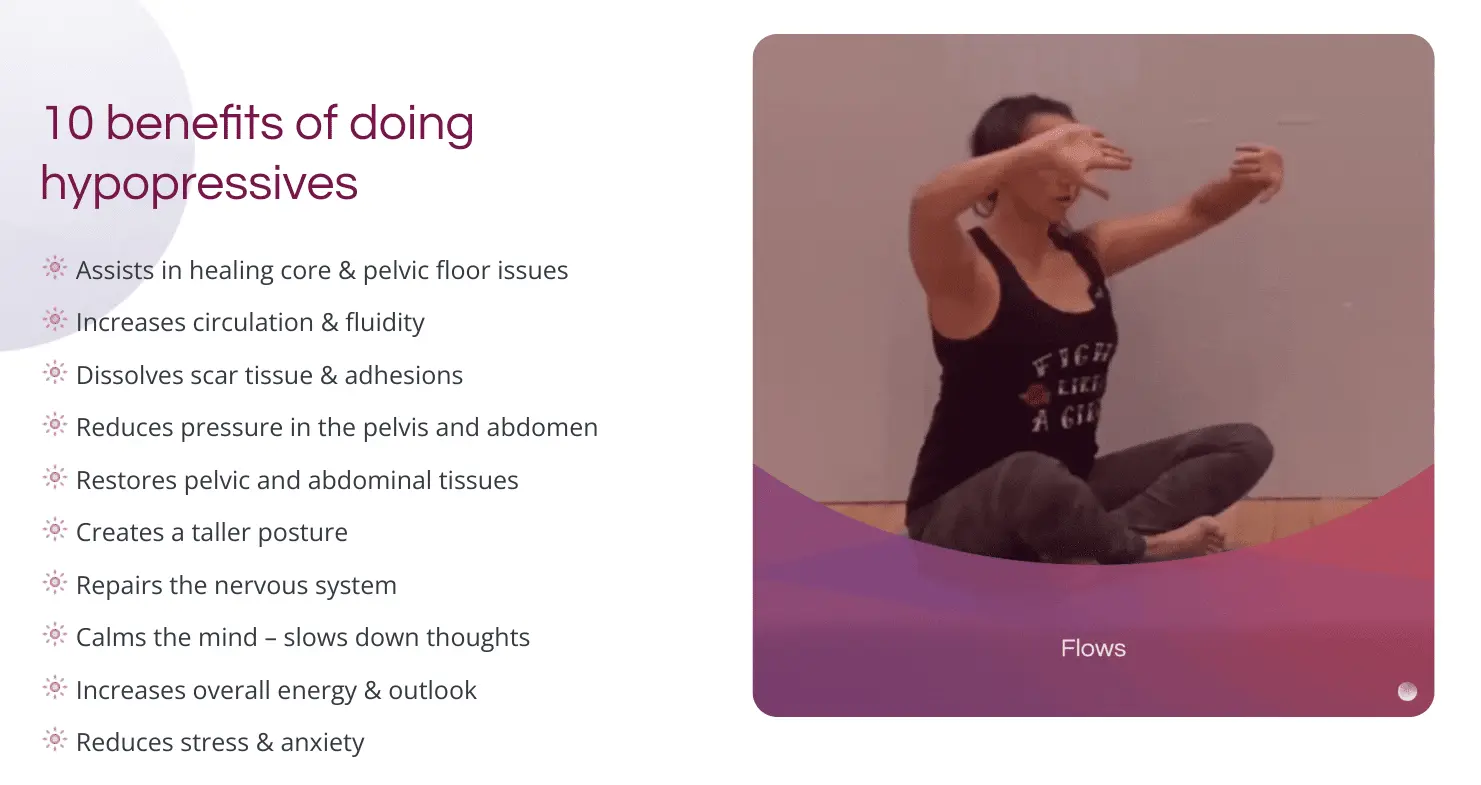Life With A Pessary – All You Have To Know (Prolapse)
- June 9, 2022
- Pelvic Floor
Life With A Pessary – All You Have To Know (Prolapse)

Giving birth is a miraculous time in a woman’s life. There are so many joyful emotions she experiences, and yet, if the birth results in prolapse or incontinence, this blissful high can quickly turn into fear, sadness, and depression.
What’s even scarier is that the healthcare system has completely normalized surgery as the main option for treating prolapse. But, like any surgery, pelvic organ prolapse surgery is invasive, risky, and expensive.
So… what about pessaries as an alternative? You may have heard this word before, but don’t know much about it.
It’s a good thing you’re here because, in this article, we’ll take a look at how you can use pessaries, if and how much they help, and if they are the right solution for you.
Spoiler alert! Pessaries are not for everybody & they do not heal the root cause of prolapses or incontinence, because they only treat the symptoms.
So, What Is A Pessary?
Pessaries are meant to hold the vaginal walls and support organs or tissues affected by weak pelvic floor muscles and tissues. These soft, removable, and reusable devices are inserted into the vagina to avoid urine leakage and or help displaced organs (pelvic organ prolapse) especially after giving birth.
This may sound great in theory, but pessaries are just a temporary fix, they do not cure incontinence or prolapse. Rather, they serve as short-term relief. Despite their unsuspecting forms, many women are experiencing adverse effects using these devices or have found them incompatible.
Just like other healing methods, pessaries aren’t for everyone. But let’s take a look at what makes this method so popular.
Using a pessary is a conservative treatment recommended by doctors when patients are unfit for surgery, decided to not have surgery, are waiting for an operation, or if they are pregnant or planning for another child.
The devices are purchased by patients based on the size and style recommended after their fitting. This fitting process measures the size of the vagina, assesses the severity of incontinence or prolapse, inquires as to whether the patient chooses to manage the pessary herself, and asks if she prefers to remain sexually active.
How a fitting is done by your doctor:
1. Your doctor will prepare the sterilized fitting rings, gloves, lubricant, and autoclave.
2. The doctor will insert his/her middle finger behind your cervix in the posterior fornix and place his/her index finger against the pubic notch. (The distance between these two fingers will be used as a basis of the pessary’s size)
3. Then, the doctor will choose the best size of pessary using the approximate measurement.
4. At this point, the fitting ring will be inserted behind your cervix while the opposite side of it is behind the pubic notch.
5. Your doctor might sweep his/her fingers around the ring’s perimeter to check for pressure points. He/she might also try to change the ring to a smaller or bigger size if it doesn’t fit properly.
6. Once you and your doctor have decided on the style and size of the pessary, you can easily purchase it over the counter ranging from $31.00 to $51.50 each.
Note: it is important to get the right fit for your pessary or it might cause discomfort and repeated expulsion which can become very frustrating.
So when do the problems arise?
Its side effects or complications may actually start after the fitting or during the first week of usage. In fact, a study found a whopping 56% complication rate in pessary users.
Symptoms may include:
• general discomfort
• vaginal dryness
• offensive discharge
• irritation
• bleeding
• difficulty passing urine or bowels
• symptoms seem to get worse after taking the pessary out
When this happens, seek advice from your healthcare provider to avoid further complications.
To avoid pessaries and potential health complications altogether, there are natural remedies for prolapse and incontinence.
We recommend trying several different natural healing methods first, before considering devices like pessaries. It takes patience to heal naturally, but it’s a much better alternative than having a synthetic and foreign device inside your vagina.
Different Types of Pessaries
Pessaries are generally made of inert plastic or silicone and sometimes, metal to freely shape them during insertion or fitting.
Here is an overview of the most known type of pessaries:
1. Ring Pessary:
Most common type of pessary used for patients experiencing pelvic organ prolapse. It comes with different variations to ensure the best fit.
• Silicone folding ring pessary – more flexible than vinyl pessaries and can be folded in the middle making its insertion and removal easier.
• Ring with knob – designed to address prolapse and stress incontinence. The knob serves as additional support to the bladder neck to avoid urine leakage.
• Silicone ring with support – commonly used by women with advanced prolapse. It has a supporting membrane with drainage ports to prevent an organ from falling at the center of the ring.
2. Gellhorn Pessary:
Circular and flat plate with a stem in its center for stabilization. This is another option for women with more critical prolapse.
3. Shelf Pessary:
Kidney-shaped plate for support with a curved stem in the center to keep it in place in the vagina. Its convex edge is positioned in the posterior vaginal fornix while the concave edge faces toward the bladder.
4. Shaatz Pessary:
Like the Gellhorn pessary, it is circular and has a flat plate but without the stem. This is usually recommended for women with a low or shallow pubic notch and those who are sexually active but need more support.
5. Cube / Tandem Cube Pessary:
This cube has 6 concave sides that create a suction effect for retention in the vagina. This type of pessary, however, needs to be removed every day and is made for women with advanced prolapse.
6. Donut Pessary:
Given its size and shape, this pessary is used for more severe cases of prolapse to fill the vaginal space.
7. Inflatable Pessary:
Consists of the head, which is inserted into the vagina, and the stem that sits outside. The stem has a bead in the closed-end for deflation and a separate bulb (hand pump) to the open end of the stem for inflation.
8. Vaginal Dish Pessary with Knob/ Urethral Bowl:
A circular dish pessary with a cupped shallow bowl and a knob designed to lift the bladder neck. The slight elevation helps patients with incontinence or a prolapse when other types of pessaries failed to fit.
9. Gehrung Pessary:
U-shaped with malleable wires incorporated in its edge for easier fitting. It is designed to help both cystoceles, rectoceles, and second to third-degree prolapse.
10. Hodge Pessary:
Manually shapeable pessary for patients with stress incontinence who have a very small vaginal opening. Women with a shallow pubic notch might also use this pessary.
How To Care For Your Pessary
Different types of pessaries require different attention.
For starters, it’s best to consult and follow your doctor’s advice in terms of maintenance. Some women prefer to have their pessaries inserted and removed by their medical provider, but if you choose to manage your pessary independently, here are some basic reminders:
1. Be sure to inquire about the length of which you can use your pessary. Some types can be taken out after three or six months while some have to be cleaned daily. Regardless, it’s a good idea to visit your doctor a few times a year to make sure everything is ok.
2. When cleaning a pessary, wash it with mild soap and water.
3. Wash your hands thoroughly before and after the insertion or removal of your pessary.
4. Consult your doctor about vaginal wash or products that you would like to use to avoid complications.
5. In cases of side effects such as bleeding, foul smell of vaginal discharge, and or new pain in the pelvic area or genitals, talk to your doctor right away.
6. Maintain a healthy diet and holistic lifestyle.
7. Kegels are not necessarily the best exercise to accompany your pessary fitting (it might make your condition worse).
How Pessaries Affect Your
Quality Of Life

When a pessary is effective, you might be able to enjoy activities with fewer prolapse and incontinence symptoms.
But we can’t emphasize enough that a pessary is not a permanent solution and could actually create more harm than good.
What about Sex?
It’s crucial to tell your doctor if you plan to stay sexually active so he or she can administer the right type of pessary.
Some pessaries can be worn during sexual intercourse which should not cause discomfort or affect a woman’s orgasms. However, some couples prefer to take it out before having sex, which in that case must be handled with care and proper hygiene.
For certain styles, like the cube and donut pessary, they have to be taken out as they block the vaginal space.
Bowel Movement
Using an incorrect type or shape of pessary might cause incomplete defecation and if it’s too small, there’s a risk of the pessary falling out during your bowel movement.
Effect of Pessaries on Prolapse
Based on a study published in the American Journal of Obstetrics and Gynecology, women with pelvic organ prolapse (POP) experience a lower quality of life. They struggle with low self-esteem and are generally more self-conscious personally and in their intimate life.
Although pessaries provide temporary relief on early to advanced stages of prolapse, which can increase the quality of life of women, a pessary is not an actual cure because it does not reconcile the underlying issue of the illness.
If you want a real, long-lasting solution that addresses the root causes of prolapse, take a look at our science-based, 100% natural treatments for Pelvic Floor Dysfunctions.
Why People Discontinue The
Use of Pessaries
Women who are apprehensive of pessaries from the beginning are more likely to get anxious upon experiencing some side effects and will want to remove the pessary and find a more permanent approach.
Is it reasonable to be worried about using a pessary?
Well, as small as they may be, pessaries are still considered foreign objects to the vagina. So aside from expecting minor side effects, users are also responsible for keeping it sanitized and in good condition at all times.
Failure to do so may lead to more serious complications such as vesicovaginal fistula, ulceration, rectovaginal fistula, vaginal cancer, intravesical migration, and ureteric obstruction.
Therefore, not only do pessaries serve only as a bandaid to, maybe, slow down the progression of prolapse but it also comes with a fair share of health risks.
And the same goes for Kegels. Avoid doing Kegels if you have a tense pelvic floor!
They don’t relax tensed pelvic floor muscles, they actually create more tension and stress in your pelvic floor, resulting in pain and discomfort.
To avoid these dangers, we suggest trying these proven natural healing methods in place of pessaries:
• Hypopressives reduce pressure in the abdominal-pelvic cavity and improve reflexivity.
• Belly Dancing is a fun series of movements that greatly benefit the health of the pelvic floor.
• Scar Tissue Remediation decreases scar tissue in the pelvic floor while releasing emotional traumas stuck in the womb.
• Try our Pelvic Floor Dysfunction Program, where we curate a personalized plan for you based on the symptoms and condition you’re facing!
• Clean eating is essential in supporting your body’s nutritional needs and thereby decreasing unnecessary stress.
• Essential Oils help process the difficult and burdensome emotions you’re facing due to your prolapse.
• Vaginal Steaming involves sitting over very warm herbal infused water to calm and relax your pelvic floor muscles.
• Visualization and Affirmations work by seeing and affirming your desired outcome, such as optimal health. The mind doesn’t know the difference between what’s real and imagined, so imagine (i.e. visualize) yourself healing and living a happy, fulfilling, and balanced life. Also, put your visions into words and write them down or speak them aloud as often as possible.
Don’t settle for a temporary fix,
you deserve more!
Achieve complete healing of your prolapse with MoonRise.
The long-term benefits of a holistic and complete healing approach will enable you to live your life to the fullest!
Our courses and one-on-one coaching are 100% directed towards natural healing, with proven methods that worked for the women teaching you these methods.
where we’ve created a safe and welcoming environment so women like you can heal naturally, too.
Blog posts you might like:
Blog posts you might like:






